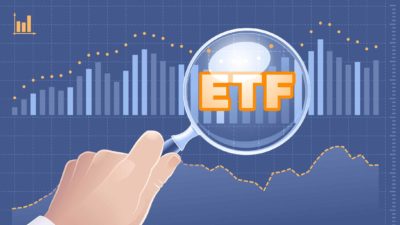Warren Buffett is the world's most successful investor, amassing a $100 billion fortune over 80 years of investing. So, he's worth listening to for investing advice, and thankfully, he keeps it very simple for us.
One of the biggest goals most Australians strive for is a happy, healthy, and financially secure retirement.
It's a great goal to have because we're living a lot longer these days, so we all need a personal plan as to how we're going to fund two or three decades of retirement after our working lives are over.
Unless you're willing to live on the age pension, which is currently $1,064 per fortnight for singles and $1,604 for couples, you'll need to buy some assets that can deliver reliable passive income and growth.
One investment option is ASX shares.
And you can't buy them soon enough. As Buffett says, time is the secret sauce to investing success.
What is Buffett's best retirement investment strategy?
The chair of Berkshire Hathaway Inc provides really simple, specific advice that you can act upon today.
Here it is.
Buffett's key investment strategy for retirement is to make consistent investments into an S&P 500 Index (SP: .INX) fund throughout your career.
The S&P 500 is the benchmark United States stock market index. It tracks the performance of the 500 largest listed companies by market capitalisation. It's a real-time measure of the health of the US economy.
Owning shares in an index fund is like owning a little piece of every company within that index.
Buffett reckons consistently buying shares in a low-cost S&P 500 index fund regularly is the most practical long-term investment strategy for ordinary investors trying to secure a decent retirement for themselves.
It's simple, it takes little time and effort, and it works.
What are the returns like?
The S&P 500 has averaged about a 10% annual return on investment (ROI) over the long term. There's no guarantee that will continue, but there's no reason to believe this will suddenly change, either.
A 10% annual return is pretty darn good, especially if you start early in your working life. A 20-year-old investor would have 40 years of 10% average gains ahead of them before retirement in their 60s.
Index funds are not as exciting as ASX shares that skyrocket 50% or 100% (or more) some years due to hot thematic investing trends like we saw in 2021 and 2022 with ASX lithium shares.
But if you believe in the tortoise over the hare, and you don't have the time or interest to research ASX shares, select individual stocks, and monitor the health of each business over the long term, an index fund is a great option. You get the benefits of diversification, dividends, and low annual fees all in one.
Buffett considers investing in the S&P 500 as a proxy for investing in the United States economy.
In his annual newsletter released on 25 February, Buffett says:
I have been investing for 80 years– more than one-third of our country's lifetime.
… I have yet to see a time when it made sense to make a long-term bet against America.
How to follow Buffett's retirement strategy using ASX shares
If you want to follow Buffett's advice, you have a few choices.
Firstly, you can invest directly in an S&P 500 index fund via a stockbroker or online trading platform.
For some assistance with this, take a look at our story on how to buy US shares in Australia.
Alternatively, you can buy an exchange-traded fund (ETF) on the ASX that tracks the S&P 500.
An example is the iShares S&P 500 (AUD Hedged) ETF (ASX: IHVV).
The average annual return including distributions has been 9.46% since its inception in 2014. The hedging mitigates the effects of currency fluctuations between the Australian and US dollars.
The ETF has a management fee of 0.10%.
Or, you can apply Buffett's theory with an Australian flavour, backing our economy over the US economy.
That means buying an S&P/ASX 200 (ASX: XJO) index fund, which exposes you to the top 200 ASX shares by market cap.
The ASX 200 is our benchmark index, similar to the S&P 500 in the US. We're a smaller country, so our benchmark index has fewer companies.
An example is BetaShares Australia 200 ETF (ASX: A200). The average annual return including distributions has been 7.99% since its inception in 2018.
It has a management fee of 0.04%.
But as my Fool colleague Sebastian points out, the Vanguard Australian Shares Index ETF (ASX: VAS) is by far the most popular index fund on the ASX.
It tracks the performance of the S&P/ASX 300 Index (ASX: XKO).
The Vanguard Australian Shares ETF has returned an average of 9.1% per annum including dividends since its inception in 2009.
It has a management fee of 0.10%.
Don't overlook ASX index fund fees
There's very little work involved for the fund manager of an ASX shares index fund, which is why their fees are so much lower than actively managed funds.
Buffett is outspoken about the high fees active managers charge, given that many underperform the S&P 500's average returns over the long run.
All index funds charge relatively low fees. The difference between them may seem negligible right now, but over a lifetime of investing, they can add up to a lot — like, five figures. That's serious money!
What does consistent buying mean?
When Buffett says you need to invest consistently, he's talking about dollar-cost averaging on autopilot.
To grow your wealth without giving your investments much time and attention, you must put your ASX shares investing habits on autopilot.
Your goal is to invest chunks of spare cash into your index fund regularly.
Here are three ways to go autopilot on your investments.
3 ways to put your ASX shares investments on autopilot
Pick a set time interval for investing. Once a month (watch those trading fees, though!), once per quarter, once per year, whatever you are comfortable with. Then don't miss a single one of those intervals. Buy in bear markets, buy in bull markets. Buy no matter what, and let time and the magic of compounding work.
Be disciplined and trust that over time, you will achieve those perfectly healthy average returns and build a great nest egg for retirement.
Secondly, reinvest the dividends your ASX index fund or ETF pays by purchasing more shares automatically.
Most funds have dividend reinvestment plans (DRPs), whereby you tick a box or fill in a form, and the fund manager will organise the automatic purchase of more shares with those dividends for you.
Set and blissfully forget.
Thirdly, set up a salary sacrifice arrangement whereby your employer will automatically deposit part of your pay into your superannuation fund each month.
Many super funds offer index investment options, so talk to your fund manager about this.









